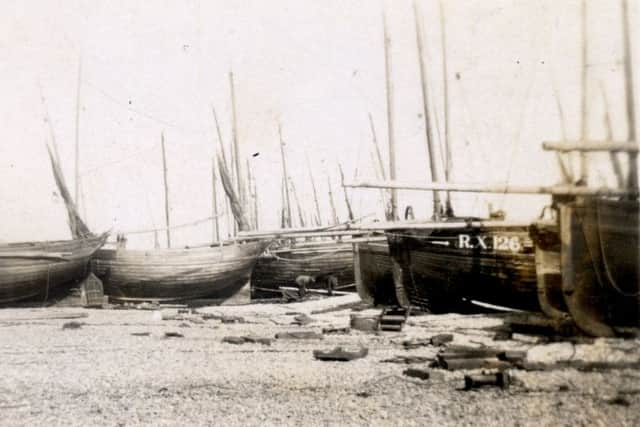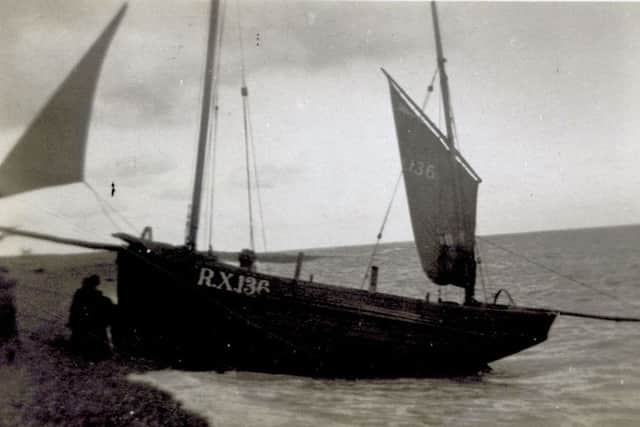Personal album opens a window to the past
This article contains affiliate links. We may earn a small commission on items purchased through this article, but that does not affect our editorial judgement.


He writes: We have seen that pictures for inclusion in personal albums were available from commercial photographers to either replace or complement the personally taken images which, in turn, depended on the skill of the amateur photographer and of course the quality of the equipment and developing.
Before the advent of digital photography both cameras and film were relatively expensive, even the ubiquitous Box Brownie, and there was always the delay between taking the picture and seeing the results; nowadays it’s simple, the taken image is instantly visible and can be re-taken if it doesn’t match expectations.
Advertisement
Hide AdAdvertisement
Hide AdTo those interested in the development and evolution of an area and social historians personal pictures are a rich source of primary information, not just the ghosts of long dead and frequently unknown human subjects but the clothes they are wearing and the background activity in the pictures.


This particular album that reports that it relates to 1929, only contained a dozen or so pictures but the photographer has captured the end of an era. The inflexible tramway, introduced 25 years earlier was worn out, none of the tramcars had been replaced. The tram track, mostly single-track with passing loops, was seriously worn and in many places on the ‘wrong’ side of the road and was already causing conflict with the increasing numbers of motor cars on the road.
The Hastings trolleybus system that once served the town was opened on 1 April 1928, and Hastings’ own, unique, open-top double-deck trolleybus, Happy Harold was in the ceremonial opening procession.
Trolleybuses gradually replaced the Hastings tramway network with the last tram being withdrawn from service, without ceremony, less than a year later on March 13 1929.
Advertisement
Hide AdAdvertisement
Hide AdBy the standards of the various now-defunct trolleybus systems in the United Kingdom, the Hastings system was a moderately sized one, with a total of 10 routes, and a maximum fleet of 58 trolleybuses. However, by May 1929 Hastings had 21 miles of trolleybus routes and was at that time the longest system in the world and was to survive until 31 May 1959.


Sidney Little’s seafront improvements were not far in the future. It wasn’t just the trams that were phased out, some of the bigger fishing boats too would not see much of the 1930’s.
All illustrations throughout this series are from Ion Castro’s own collection and he can make available copies of many of the historic images used in this series. There’s more local history on Ion’s website, www.historichastings.co.uk
Captions:
Fishing Boats.


On the left, the ‘EVG’ - RX 152, the biggest of the last generation of sailing fishing boats, one of the last to be built without an engine she was new in April 1910 and was to meet her end on March 17 1943 when she picked up a mine in her trawl. Fortunately the three crew aboard, - ‘Quiddy’ Mitchell, Henry Pepper and George ‘Nunkum’ Adams escaped without serious injury. Another crew had not been so lucky when she was machine-gunned earlier in the war by a German fighter and ‘Grizzle’ Phillips, the helmsman, was killed instantly, luckily the rest of the crew escaped unhurt. The RX278 ‘Enterprise’, built in 1912 and now in the Fishermen’s Museum was another of the engineless generation
Advertisement
Hide AdAdvertisement
Hide AdClupidae, RX 126 seen on the right was built in 1892 and worked in Hastings until she was sold to Margate in 1930 and her claim to fame was that she was the first fishing boat at Hastings to benefit from what’s now the commonest type of back end, the elliptic stern. ‘Clupidae’ is the Latin word for the family of herring-type fish.
The boat in the centre may be the RX130 ‘Surprise’ built in Hastings in, 1904 and broken up in 1930.
Harbour.


A unusual view of the unfinished harbour only a shade over thirty years since the foundation stone was laid in 1897 and already the wooden trestlework has gone and the damage to the concrete structure can clearly be seen. This end has been buried under the shingle that has built up against the rest of the harbour
Queens Hotel.
Another ‘personal’ picture showing that the entrance to the Queens Hotel was very close to the beach, at this time the main road ran through Robertson Street, past ‘The Memorial’ through Castle Street to the Old Town. Judging by the scowl the old lady in the background was not keen on being photographed. Small boats were quite common on the foreshore until prohibited during the second war and the practice never recovered.
Paddle Steamer.
Advertisement
Hide AdAdvertisement
Hide AdPossibly the original Waverley (1899 – 1940) operated by P&A Campbell she is heading to the pier. Eleven years later she was wrecked evacuating troops from the beaches at Dunkirk and the name revived in 1947 when the ‘Waverley’ we know today was built.
RX136.


RX 136 ‘Britannia’ locally built in 1895; her fishing days ended in 1930
DY5113.
Fleet number 11; this was one of the first of the batch of 50 single-deck, centre entrance three-axle Guy BTX trolleybuses to enter service in June 1928. The original fleet no. 22 was disposed of when the new AEC double-deckers were introduced in 1940 and DY5113 took its number, the original No 11 being allocated to a new AEC. No 22 was to survive as a trolleybus until the end of 1947 when its control gear and motor were stripped out and was used as a booking office in the old Coach Station next to the Town Hall until it was scrapped in January 1953 when it was replaced with No 45 that is now in preservation awaiting restoration. A rare image because it shows that brief period of overlap when both trams and trolleybuses operated in Hastings. The trolleybus on Route 4 will ascend Cambridge Road and terminate at The Victoria Inn, Hollington via Silverhill and the tram will run west along Robertson Street and then along the seafront to Cooden, the other side of Bexhill. It looks as if the amateur photographer wanted an image of the ‘new’ trolleybuses and got the tram as a bonus
Robertson Terrace.
One of the few personal pictures centred on a friend or member of the family with an outfit typical of 1929, the beach seems well populated and in the background Robertson Terrace is still complete and Sidney Little has yet to extend the promenade forward with his revolutionary underground car-parks and considerably widened promenade.
Pelham Crescent,
Advertisement
Hide AdAdvertisement
Hide AdBeach Terrace on the right, in front of St.Mary-in-the-Castle, will be demolished by Sidney Little in a few years time and the promenade will be widened. One of the 8 new open-top double deckers can be seen on the left behind the traction pole that would have carried the twin wires that ‘fed’ electricity into these almost silent vehicles that emitted no pollution. This is new territory for electric traction, trams didn’t cover this part of the town and access to the Old Town by tram was via Harold Road to a terminus at the Market Cross, north of the Wilderness and it will be many years before the Bourne road would split the old Town in two. Incredibly High Street hosted two way traffic and trolleybuses ran through in both directions.
Parade Extension.
Hastings Corporation had purchased the shoreward end of the pier in 1913 and enlarged it, becoming known as the ‘parade extension’ it was considered part of the promenade and affords a fine view of the White Rock Pavilion (now Theatre) that had been opened a couple of years earlier in 1927 by the Prince of Wales (later King Edward VIII), on the site of the hospital.
Don’t miss out on all the latest breaking news where you live.
Here are four ways you can be sure you’ll be amongst the first to know what’s going on.
Advertisement
Hide AdAdvertisement
Hide Ad1 Make our website your homepage at www.hastingsobserver.co.uk
2 Like our Facebook page at www.facebook.com/hastingsobserver
3 Follow us on Twitter @HastingsObs
4 Register with us by clicking on ‘sign in’ (top right corner). You can then receive our daily newsletter AND add your point of view to stories that you read here.
And do share with your family and friends - so they don’t miss out!
The Hastings Observer - always the first with your local news.
Be part of it.